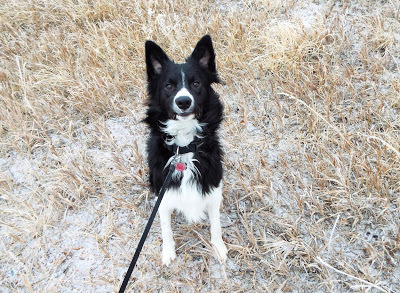The Lingo of Storytelling

When I was a young child, just a few weeks before I entered Kindergarten, our family moved from Ohio to Michigan. Being the pest that I was, I was hanging out at our new neighbor’s house one day watching her work in her garden.She asked me what foods I liked.
I said, “I like cherries, but I don’t like the seeds.”
“Seeds?” She paused in her digging. “You must be from the South. Here in the North, we call them pits.”
That was my first introduction to dialect and how the vocabulary we use depends on where we are and what we’re doing.

A few weeks ago, Mary Coneally brought us a post about the Lingo of Designed Pages – a brief vocabulary of the series of edits we authors enjoy as our stories travel from our computers to published books. You can read that post here: Designed Pages--the Lingo
Today, I’m bringing you a brief introduction to the vocabulary of writing stories. I’ve gleaned these often-used but seldom-defined words from questions posed by newbie writers. Some of these might be familiar to you, but some might not be.
Just for fun, see if you can come up with a definition before reading mine. Keep track of the times we agree, and then share your score in the comments!
1. Protagonist: As the main character in the story, the protagonist is the person that the story is about. Also called the Hero or the Heroine. A romance will have both.
2. Antagonist: The antagonist in the story is the character who is working against the protagonist. The bad guy. Of course, the antagonist doesn’t have to be a guy (think of Cruella D’Ville in 101 Dalmatians) or even a person. It can be a setting, the weather, or even the fallout from a bad decision the protagonist made in the past. The antagonist doesn’t even have to be “bad,” as long as he or she is working against the protagonist’s goals.
3. Secondary Character: This is any character who adds to the characters’ stories without insisting on telling their own. These are the parents, the neighbors, the sidekicks, the grandmotherly woman at church. Secondary characters round out your cast of characters and give your protagonist someone to talk to or to react to. They can also provide a much needed moment of comic relief in a tense scene.
4. Active Voice: This is a grammar term that means that the subject of the sentence is the one doing the action of the verb. Like this: “Sam ate the grasshopper.” The active voice is preferable for modern popular fiction since it tends to keep the reader involved in the action of the story.
5. Passive Voice: Another grammar term. In the passive voice, the subject of the sentence is the one having the action done to him. Like this: “The grasshopper was eaten by Sam.” Quite often, a passive voice sentence will have an understood agent, as in: “The grasshopper was eaten.” The passive voice is out of favor in popular fiction right now, so learn to identify the passive voice and to turn those sentences into active ones.
By the way, does it help to know that Sam is a dog? He'll eat anything that stays still long enough to go into his mouth!

6. In media res: This is a Latin term that used to be taught in composition and writing classes. It means “in the middle of things.” We quite often refer to the concept without using the Latin phrase – we all know to start our stories in the middle of the action, right?
7. Three-Act Structure: This is one way to structure a plot. There are others, but this is the one you see most often. It’s intuitive to both the author and the reader and easy to use. What are the three acts? The basics: 1, 2, 3. Beginning, Middle, End. Easy Peasy, Lemon Squeezy. Until someone adds in a “2A” and a “2B.” Then, if you’re like me, you start thinking in four acts instead of three… But the main point is that there is a structure to your writing that readers can follow.
8. Plot Points: This subject is big enough for its own book – and many authors have written books about Plot Points! But we’re only talking about vocabulary today.
Plot points are the more-or-less evenly spaced turning points within the structure of your story. Depending on the writer, you might have three plot points, or as many as sixteen. I work with five major plot points and two or three minor ones. Every author develops their own method and names for plot points, and some of the names you might hear are “inciting incident,” “call to adventure,” “moment of grace,” “black moment,” “final battle,” etc.
9. Synopsis: This is a summary of the completed story that tells potential agents, editors, and publishers what your story is about. The length varies depending on the guidelines of the entity you’re sending it to, but one thing never varies: always tell the complete story, including the surprise ending.
10. Back Cover Copy: This is a different kind of summary of your story. This is what you write to entice readers to open the book and start reading the story. It should have a great hook and never, ever, give away the ending of the story. I've included an example below in the description of today's giveaway!
This was just a beginning of the vocabulary we need to acquire during our steep learning curve of becoming an author. If you think of any that I missed, be sure to mention them in the comments!
And how did you do on our informal quiz? Let me know what your score was in the comment section, and you’ll be in the drawing for my newest audiobook release, Softly Blows the Bugle!
Don't forget to come "virtually" hungry - it's calving time in the Black Hills and the cowboys have been working all night. The virtual buffet has chuckwagon fare today: sourdough biscuits, strong coffee, steak, and eggs.

Welcome back to the Amish community at Weaver's Creek, where the bonds of family and faith bind up the brokenhearted.
When Elizabeth Kaufman received the news of her husband's death at the Battle of Vicksburg in 1863, she felt only relief. She determined that she would never be at the mercy of any man again, even if it meant not having a family of her own. Then along came Aaron Zook . . .
Despite the severity of his injuries, Aaron has resolved to move west and leave the pain of the past behind him. He never imagined that the Amish way of life his grandfather had rejected long ago would be so enticing. That, and a certain widow he can't get out of his mind.
Yet, even in a simple community, life has a way of getting complicated. Aaron soon finds that while he may have left the battlefield behind, there is another fight he must win--the one for the heart of the woman he loves.
Published on April 18, 2021 23:00
No comments have been added yet.



